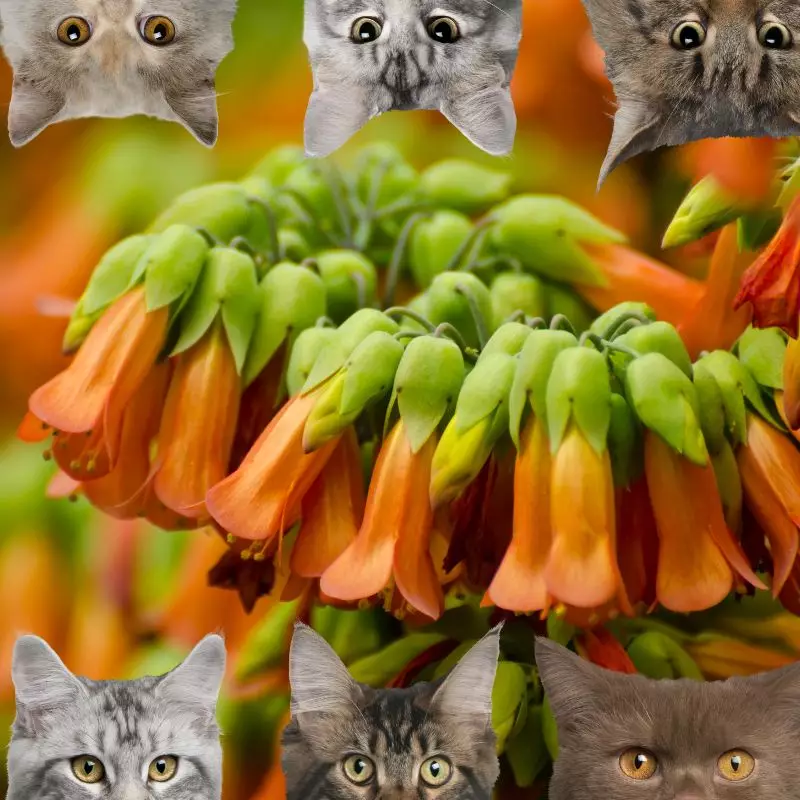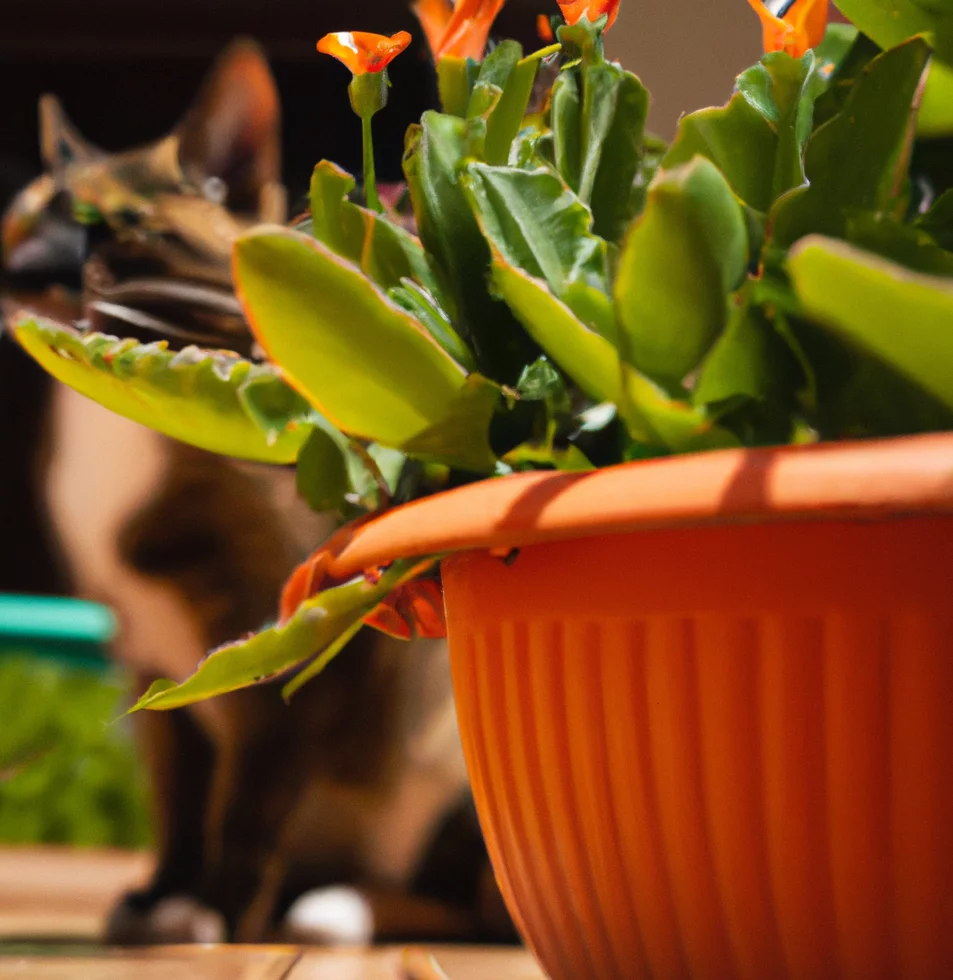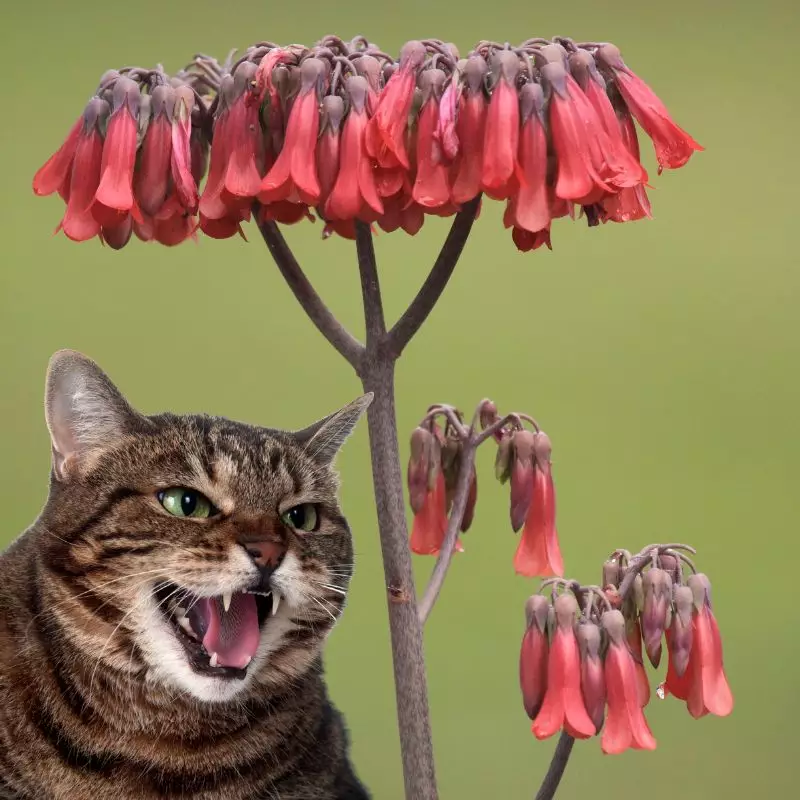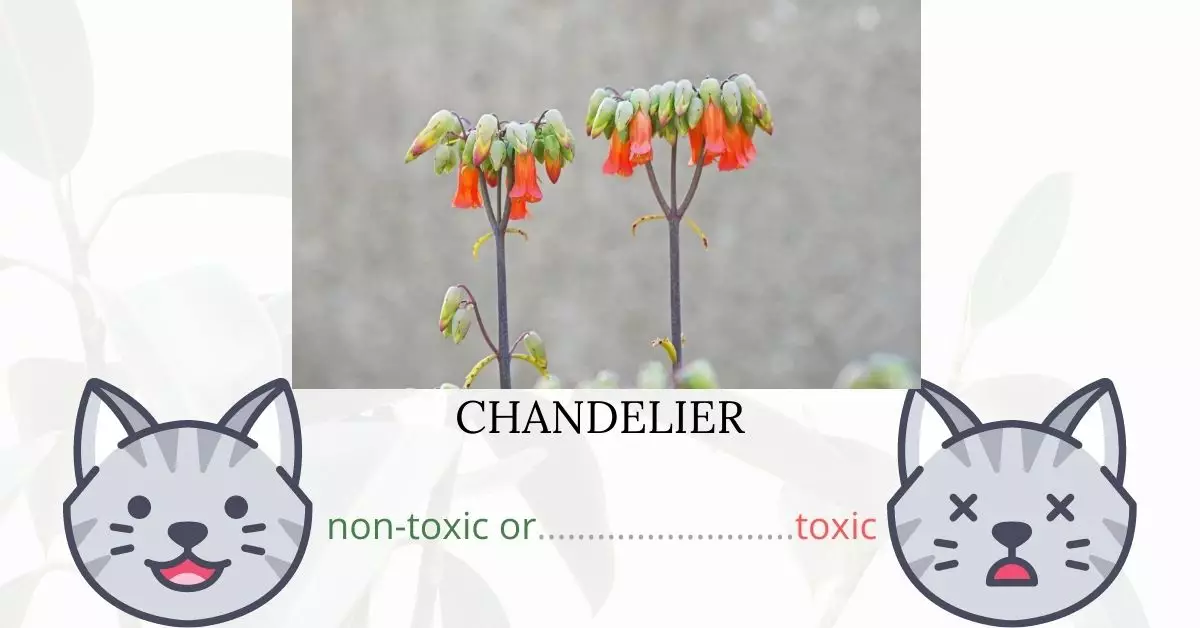Yes, the Chandelier plant, also known by other common names such as Mother-In-Law-Plant, Kalanchoe, Devils Backbone, and Mother of Millions, is toxic to cats. This succulent, commonly grown as a houseplant, contains Bufodienolides, which are cardiac glycoside toxins. These toxins can disrupt the ionic balance of the contracting muscle of the heart. If a cat ingests any part of the Chandelier plant, it may experience changes in the central nervous system, gastrointestinal issues, electrolyte imbalances, and cardiovascular abnormalities.
This article was written in collaboration with a team of experienced DVMs (doctors of veterinary medicine). Through their invaluable contributions, we ensure that the information presented here is both accurate and current. Our findings are further supported by research from high-authority websites such as ASPCA and PetMD, guaranteeing comprehensive knowledge on the potential risks associated with various plants, including the Chandelier plant, and their effects on cats.
Clinical Signs of Chandelier Poisoning in Cats

When cats come into contact with, inhale the aroma of, or ingest the Chandelier plant, they may exhibit a range of symptoms resulting from the toxins present in the plant. The severity of these symptoms is often proportional to the amount of the plant consumed. Below is a detailed overview of the clinical signs, their causes, and why they may occur after exposure to the Chandelier plant:
- Drooling: This is a common initial reaction, and it’s the body’s way of trying to expel or neutralize the toxic substances. Cats may drool excessively when they taste something unpleasant or when they feel nauseous.
- Abnormal heart rate: The Bufodienolides in the Chandelier plant are cardiac glycoside toxins. These compounds disrupt the ionic balance in heart muscles, leading to a change in the heart’s rhythm and rate.
- Vomiting: The body’s attempt to get rid of the ingested toxins can result in vomiting. This is a direct response to the irritants found in the plant affecting the gastrointestinal system.
- Weakness: As the toxins from the plant circulate through the cat’s body, they can interfere with normal muscle and nerve function, leading to general weakness or lethargy.
- Arrhythmias: Directly linked to the effect of Bufodienolides on the heart’s ionic balance, arrhythmias are irregular heart rhythms that can be a dangerous symptom of Chandelier plant poisoning.
- Dilated pupils: Some toxins can interfere with the autonomic nervous system, which controls involuntary functions such as pupil dilation. As a result, cats might exhibit noticeably dilated pupils.
- Seizures: The toxins can impact the central nervous system, causing disruptions that manifest as seizures. This is a severe symptom that requires immediate veterinary attention.
- Tremors: Similar to seizures, tremors are involuntary muscle movements that occur due to disturbances in the nervous system from the toxins.
- Death: In extreme cases, if the poisoning is not treated promptly and effectively, the combination of the above symptoms and the overall toxic load can sadly lead to death.
If you notice any of these signs in your cat after possible contact with the Chandelier plant, seek veterinary care immediately.
First Aid and Treatment of Chandelier Poisoning in Cats

Consumption of any part of the chandelier plant, including pollen, roots, stem, leaves, and petals, causes chandelier plant poisoning in cats. There is a known antidote for chandelier plant poisoning called digoxin-specific antibody fragments, which is only used in severe, life-threatening cases.
For non-life-threatening cases, the vet will provide treatments that will aid the cat to eliminate the toxins from his or her body. This may include vomit induction, activated charcoal and intravenous fluids. Other medications may be prescribed by the vet depending on your cat’s specific needs.
Recovery from Chandelier Poisoning in Cats

Early detection and treatment will aid your cat to fully recover swiftly. The speed of recovery will also depend on the amount of chandelier plant that your cat has ingested.
Once your cat is allowed to go home, ensure that he or she intakes a lot of fluids. Give your cat ample time to rest as he or she is regaining strength. Take necessary precautions and preventive measures to avoid another poisoning incident.
Prevention of Chandelier Poisoning in Cats
Remove chandelier plants from your home and gardens. If your neighbor is growing chandelier plants, make sure to stir away your cat from going to their place. Utilize playpens and cat houses to keep your cat occupied and mentally stimulated inside your home. Put additional security around your houses such as fences and safety nets to prevent your cat from straying far from your place.
If you love plants but have cats at home, check out these lists:





